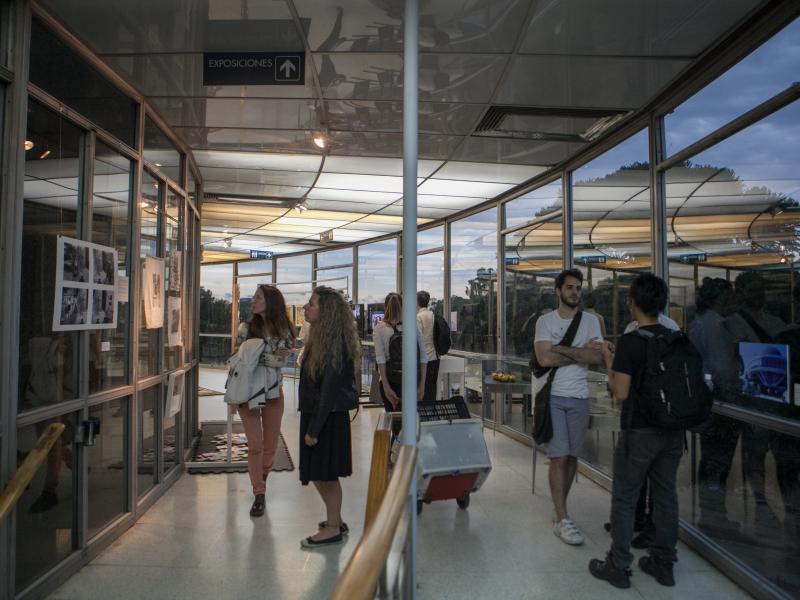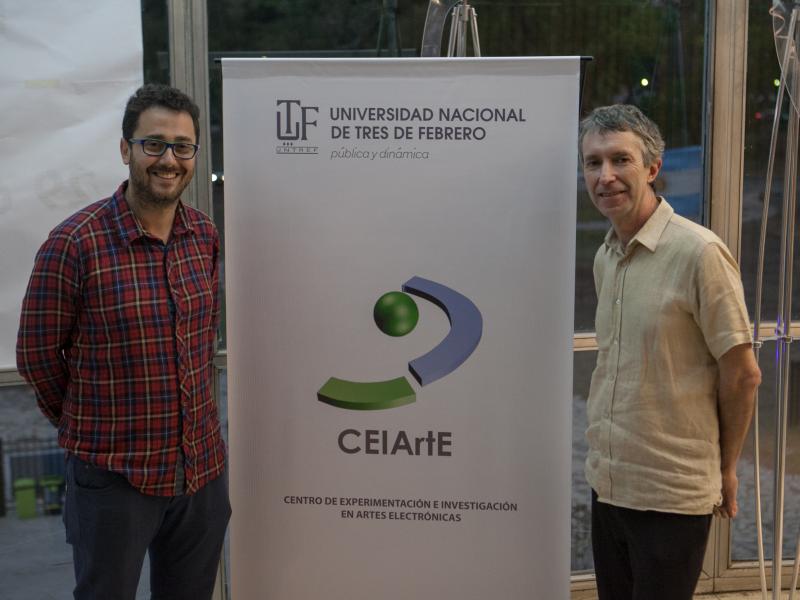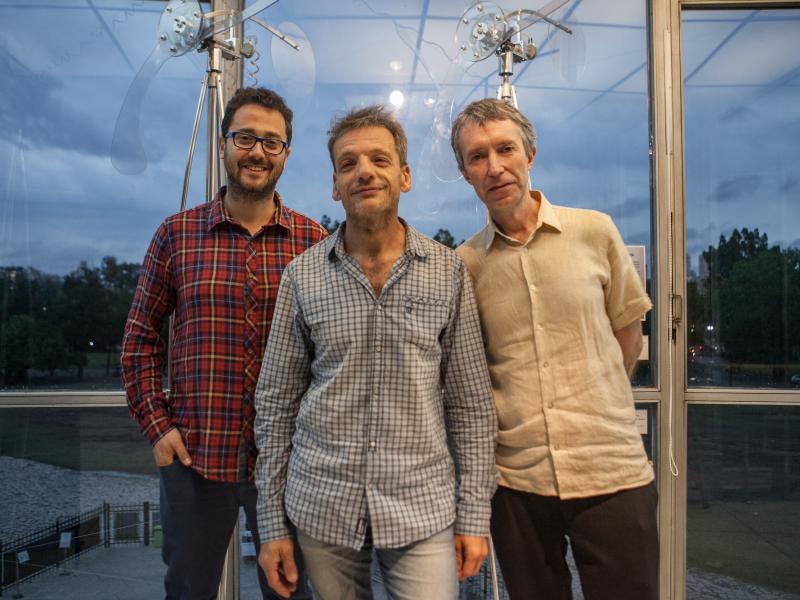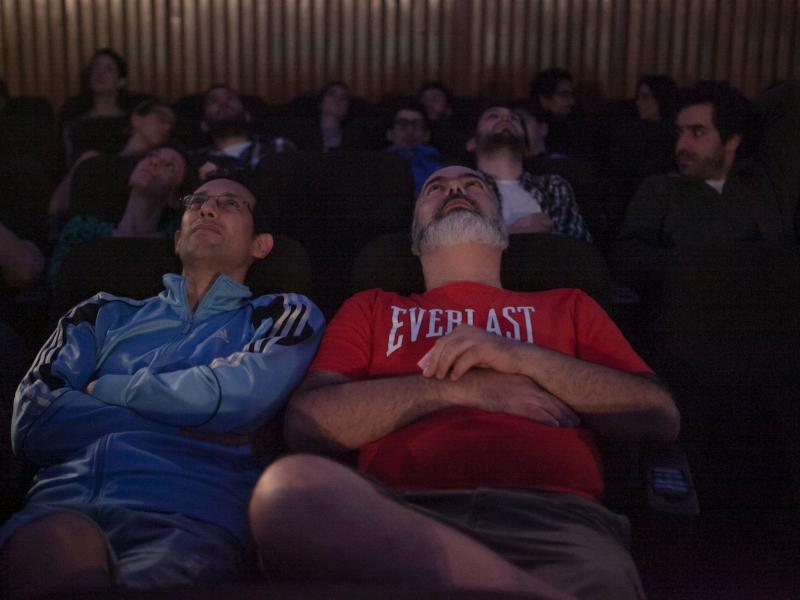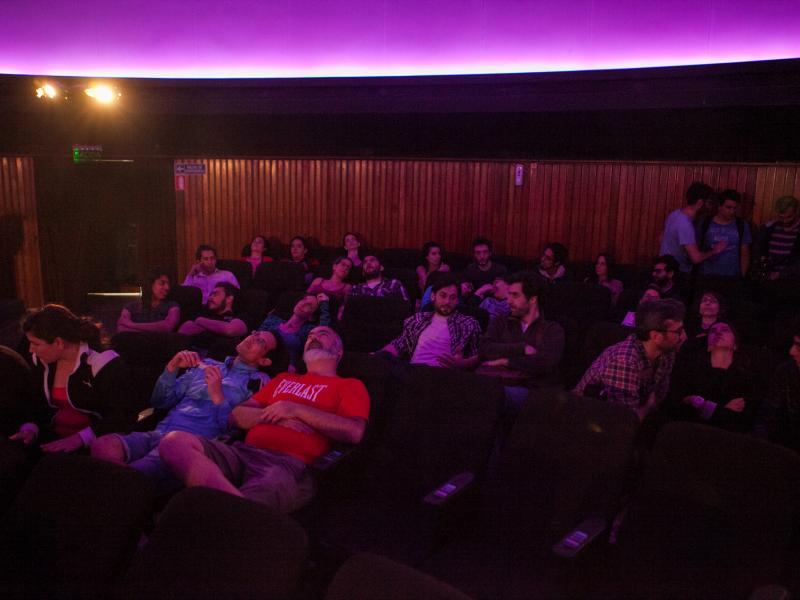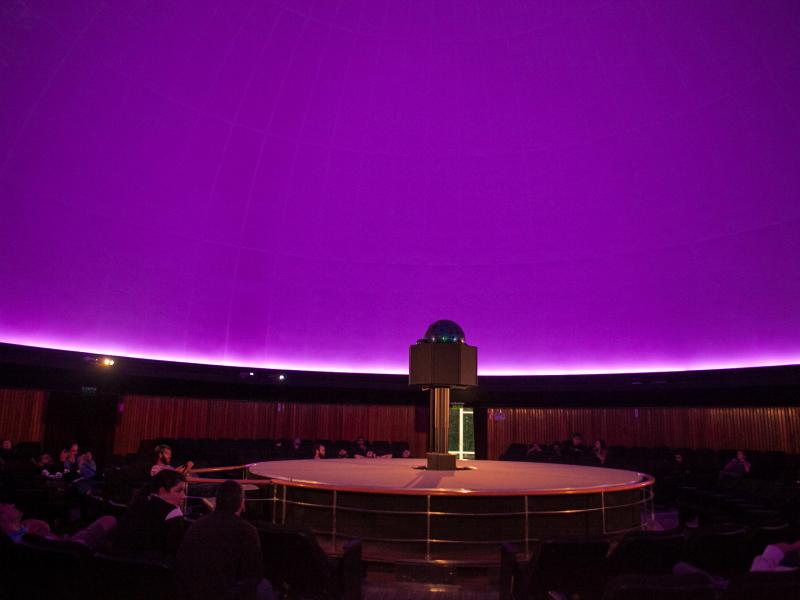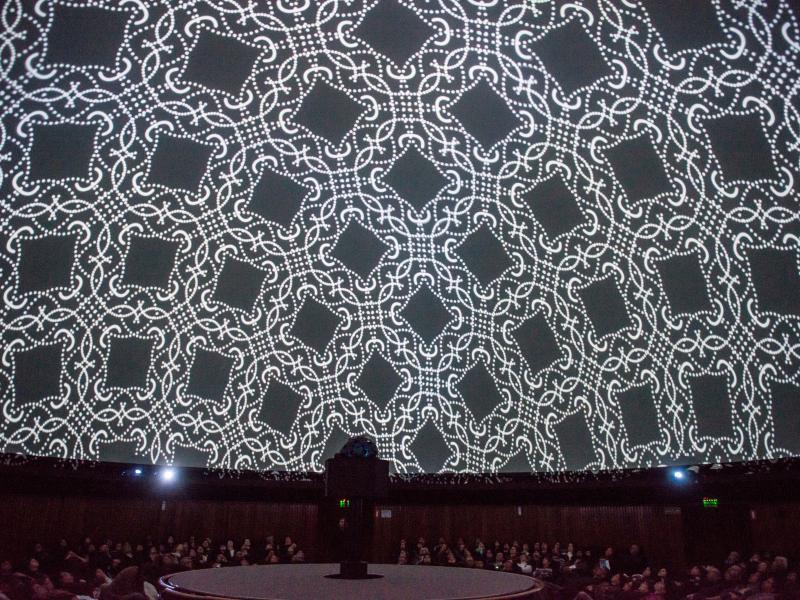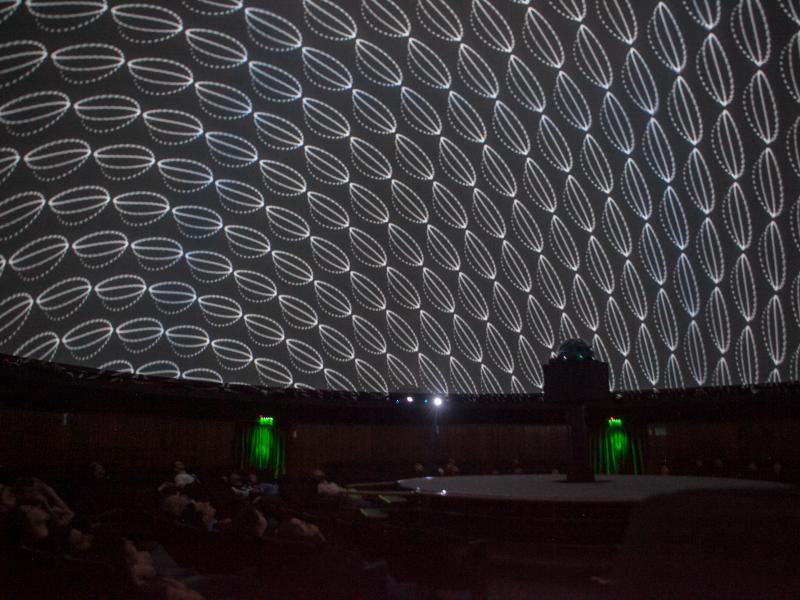«Understanding Visual Music – UVM»
(en formato fulldome)
Fecha: 09/Nov/2015 – 19:00 hs.
Lugar: Planetario «Galileo Galilei». Av. Sarmiento y Belisario Roldán – Ciudad de Buenos Aires, Argentina
Tipo de actividad: Concierto/Muestra
El Centro de Experimentación e Investigación en Artes Electrónicas (CEIArtE) de la Universidad Nacional de Tres de Febrero, el Cultural San Martín y el Planetario “Galileo Galilei” de la Ciudad de Buenos Aires, invitan al concierto de Música Visual en formato “Full-Dome” a desarrollarse en Noviembre Electrónico 2015 (en el marco del primer Taller Fulldome – UVM 2015/2016.) Understanding Visual Music – UVM se enfoca sobre los procesos de investigación-creación y las relaciones entre diversos campos del arte, la ciencia y las nuevas tecnologías que se constituyen en factores clave para la obtención de resultados creativos en un universo integrado por imágenes en movimiento y sonido organizado. Así, la animación en 2 y 3 dimensiones, la música electroacústica, el procesamiento de imágenes, el diseño sonoro y las artes digitales, pueden cruzarse con las más diversas técnicas y tecnologías e incluso con inesperados ámbitos de la ciencia, generando de ese modo el complejo entretejido que sostiene a la “Música Visual”. Intentando conocer y comprender mejor este arte, nació «Understanding Visual Music».
Programa:
- «Open System» – Jutojo Collective (Alemania/Turquía)
- «Two Space» – Larry Cuba (Estados Unidos)
- «1892» – José María D’Angelo y Hernán Huguet (Argentina)
- «Breath of the Compassionate» – Bill Alves (Estados Unidos)
- «Physical» – Matthew Biederman (Estados Unidos) y Alain Thibault (Canadá)
- «Chronotope» – Ivan Zavada (Australia)
- Durante el ingreso: «Stravinsky Rose» – Lewis Sykes (Gran Bretaña)
NOTAS DE PROGRAMA:
Open SystemJutojo Collective (Alemania/Turquía)
Open System is an audio-visual experiment in visual chemistry.When one substance reacts with another, the initial state and the final state can be precisely determined in terms of their chemistry – the transient state in between is far more difficult to define. What interests us is not the scientific aspect or the outcome of chemical experiments but a fascination in the complex and unpredictable transitional phase of the reactions. Through the 100x magnification of actual chemical reactions taking place, via a camera and video-projection, the resulting images immerse the audience deep into another world where space, scale and organic matter freely evoke diverse associations. Etkin Cekin accompanies the proceedings with live and looped guitar and electronics – where sounds react upon one another and individual sonic elements collide.
Two Space | Larry Cuba (Estados Unidos)
Two dimensional patterns, like the tile patterns of Islamic temples, are generated by performing a set of symmetry operations (translations, rotations, and reflections) upon a basic figure or tile. Two Space consists of twelve such patterns produced using each of nine different animating figures (12 x 9 = 108 total). Rendered in stark black and white, the patterns produce optical illusions of figure-ground reversal and afterimages of color. Gamelan music from the classical tradition of Java adds to the mesmerizing effect. Two Space was originally produced in 1979 as a 16mm film, using a DEC PDP-10 mainframe computer and a vector graphics film plotter. In 2009, on its 30th anniversary, Two Space was digitized and replicated to fill the Full Dome Format for a fully immersive experience.
1892 | José María D’Angelo y Hernán Huguet (Argentina)
«1982» es una obra de visual music con procedimientos mixtos sobre la imagen y el movimiento. La pieza utiliza el trabajo fotográfico realizado por Eadweard Muybridge en 1892. El tiempo pasado, presente y futuro se contraponen en convivencia y conflicto….el ser humano sigue en movimiento, caminando, corriendo sin poder atrapar lo efímero de su existencia. Esta pieza aborda el movimiento y el silencio como búsqueda de sentido hacia el devenir y el encuentro humano. Intersticios y puentes entre lo «micro» y lo » macro». Metáforas en sus silencios, resonancias, movimientos y detenciones, entretejen la trama que se reconstruyen en el contexto macro de la obra.
«Breath of the Compassionate» | Bill Alves (Estados Unidos)
Breath of the Compassionate (2009) is named for a type of pattern in Arabic geometric abstract art in which adjacent tiles alternately expand and contract into one another. This sense of visual inhalation and exhalation is known as the “breath of the compassionate” after the teachings of Ibn al‘Arabi, who named this universal principle of creation, joining the elements of fire, air, water, and earth. The music, for just intonation gamelan instruments and electronics, was composed in tandem with the images.
PhysicalMatthew Biederman (Estados Unidos) y Alain Thibault (Canadá)
Physical is an audio-reactive visual synthesizer custom built in the Touch Designer environment. 4X feeds me a series of data (OSC, MIDI, Audio) directly from his composition which in turn directly generates visual material. There are no pre-recorded sections or pre-rendered moments. The software is a performance tool built for improvisation. Physical examines the physicality of sound and image through the direct process in which they are both simultaneously created as well as their interaction on the senses.
ChronotopeIvan Zavada (Australia)
Chronotope explores the synergy and correlation between diverse forms of media, from the minute motions of human skeletal muscle cells captured on microscopic time-lapse video, to large scale digital areal photographs of the Great Barrier Reef and other typical images of the vast Australian landscape intricately layered into new audiovisual compositions creating astounding abstract universes. Chronotope is a representation of the multi-scale world we live in through the blending of senses allowing the composer to express atypical interpretations of natural phenomena and abstract ideas. Visual music in its modern form has the potential to extend human consciousness and perception.
Chronotope is a term that was coined by twentieth century Russian philosopher and literary critic Mikhail M Bakhtin to refer to how time and space are described and represented in literature. Multimedia and audiovisual art lend themselves well to the term due to the very nature of the art forms concerned. Time and space have increasingly become mutually dependant, especially through the use of technology. This work combines electronic music, computer art and abstract digital expressionism. Special thank you to professional photographer Thomas Joannes, micro-biologist Leslie Caron and production assistant Rebecca Cernec for collaborating and supporting this cross-disciplinary journey through sound and images of all scales.
Stravinsky RoseLewis Sykes (Gran Bretaña)
A ‘Whitney Rose’ inspired visualisation of Igor Stravinsky’s Three Pieces for Clarinet Solo (1918) performed by Fiona Cross of the Manchester CamerataStravinsky composed these colourful and witty works late in 1918, five years after The Rite of Spring andtowards the end of his ‘Swiss’ period. His focus at the time, on miniatures and spartan musical textures scored for just a handful of musicians, culminated in The Soldier’s Tale – with its first production in September 1918 financed by Werner Reinhart. Composed immediately afterwards and closely linked to it, Three Pieces for Clarinet Solo were written as a thank you present to him. These three short monologues are among Stravinsky’s “biggest” little works. The first slow and introspective piece, which explores the clarinet’s low register, most likely began life as a song and was sketched as early as 1916. The second is Stravinsky’s “imitation” of improvisation (he had recently heard live jazz for the first time), written without bar lines. The third revisits the ragtime and tango of The Soldier’s Tale.
Las obras programadas fueron seleccionadas por CEIArtE y exhibidas por primera vez en Buenos Aires durante el mes de agosto en el Simposio Understanding Visual Music 2013.
Este concierto continúa las actividades iniciadas por el clclo de Simposios “Understanding Visual Music – UVM.”
Las entradas para el concierto se entregarán el mismo lunes, en la puerta del Planetario a partir de las 18hs, por orden de llegada.

